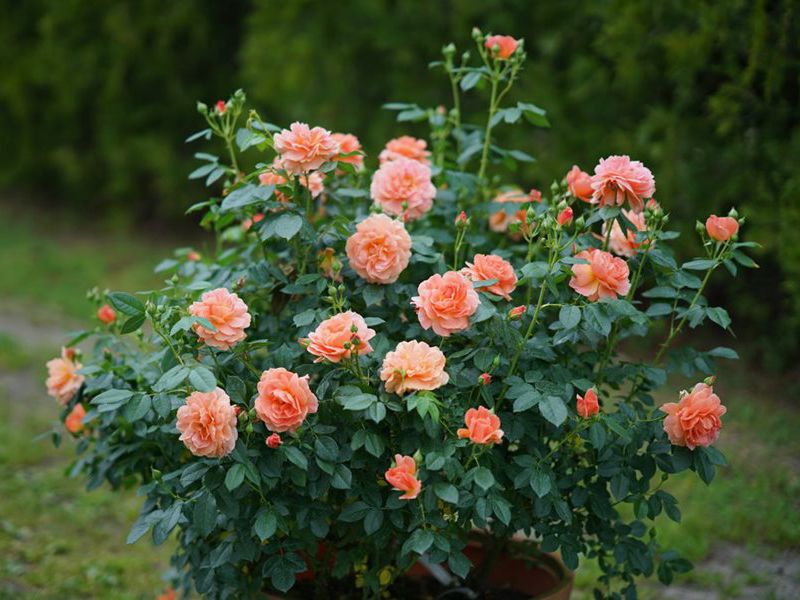July is a good month to prune roses. We follow these tips when pruning our collection, which includes Floribunda and Hybrid Tea types, with a few Shrub and Species roses.
Rose Types
 |
Floribunda and Hybrid Tea roses, i.e. modern or bush roses, are repeat-flowering. They will flower two or more times during the growing season, because they flower on new growth. They are cut back quite hard in winter to generate lots of new flowering wood. In February, the roses will be cut back again, though not as hard, to encourage an autumn flowering. TIP: Aim to completely remove main branches at the base once they reach 3 years old. |
 |
Shrub roses are generally repeat-flowering, but cutting them back hard will generate leafy growth at the expense of flowers. Treat them like you would any woody garden shrub: remove dead and diseased growth and old seed heads (rose hips), and regularly dead head during flowering. These measures will lengthen and improve flower production. TIP: In winter, prune slightly harder to keep them to the desired size and remove any wayward branches. |
 |
Species or "Old Fashioned” roses pre-date all of the modern breeding that has produced so much variety of size, shape, and colour. They generally only flower once each season on a semi-permanent framework of branches. Like one-time flowering shrubs of any genus, they can be safely pruned when flowering has finished. This gives a full year cycle to develop new flowering wood. Pruning need not be very hard, but older parts can be removed to encourage new replacement framework branches. TIP: Leave pruning until winter when the flowers are followed by attractive hips to continue the season of interest once flowering has finished. |
Tool Tips
Cutting tools should be sharp and well-adjusted, both to avoid rough cuts and reduce effort. We find a good pair of secateurs and a set of small to medium loppers covers just about all the cuts we need to make.
Bypass secateurs are ideal for pruning softer branches or stems and if you only have one cutting tool it should be the bypass style. Anvil secateurs are ideal for woodier material and are the preferred winter pruning tool in the orchard industry. Loppers are used for heavier or larger pieces of wood that are too large for secateurs, generall over around 20mm in diameter.
TIP: If time is short, Floribundas and Hybrid Teas can be pruned with hedge shears. We have pruned this way more than once to get out of trouble, without any long-term damage to the plants. Sanitation (see below) is still important.
Sanitation
 |
Roses are prone to a number of viruses, which are spread in the sap of the plant. Secateurs should therefore be sanitised after pruning each plant. This sounds like a lot of work, but it doesn’t have to be. We use an alcohol-based hand sanitiser, the type that evaporates as soon as it is applied. Methylated spirits works too. We apply the sanitiser using an inexpensive spray atomiser, spraying the secateur blades and giving them a quick wipe with a clean rag. This sanitises and cleans up sap and plant residue, keeping the secateurs in good order. |
